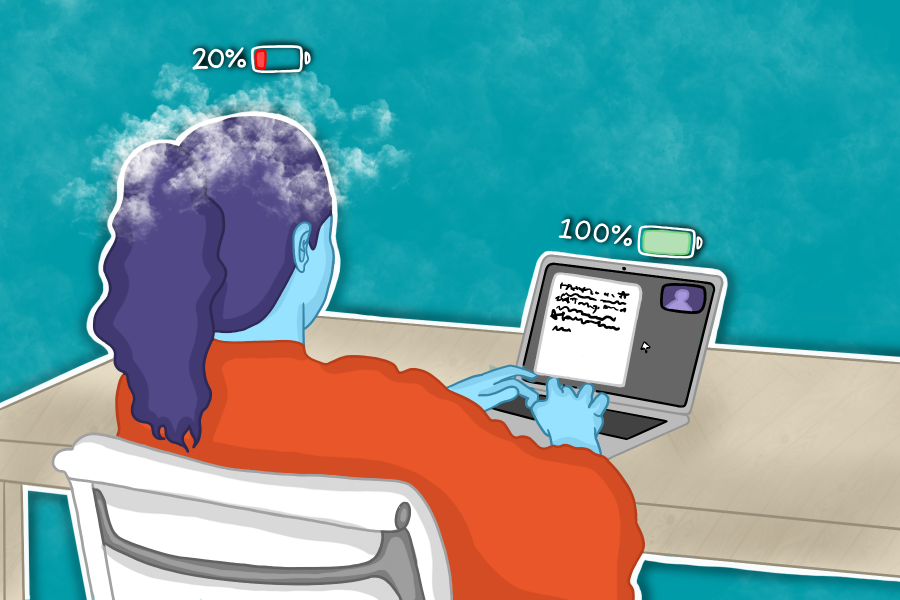Feeling tired lately? You may have Zoom fatigue.
September 30, 2020
Despite offering over 75% of class seats online, UT has failed to inform students on the unhealthy effects of overusing Zoom, such as exhaustion, trouble concentrating and loneliness. As virtual learning will most likely continue in the spring semester, an increasing number of students will continue to fall victim to Zoom fatigue. Currently, UT is unprepared to meet the mental health needs of its students.
To combat the draining consequences of excessive screen time, the Counseling and Mental Health Center must release educational resources on how to prevent, detect and overcome Zoom fatigue.
Katy Redd, associate director for prevention, development and media relations for the CMHC, said in an email that the CMHC “(doesn’t) have anyone on staff who can speak as an expert about this topic.” Yet she encourages students to reach out if they are in need of counseling.
“CMHC continues to offer its full suite of mental health services via telehealth,” Redd wrote.
While the CMHC does provide extensive services for students suffering from stress, anxiety and depression as well as COVID-19-related mental health concerns, their lack of knowledge and resources about Zoom fatigue is disappointing considering the toll it takes on students’ health and academic performance.
“It’s like you’re staring at the screen and the information is not going through to your mind,” mechanical engineering freshman Madison Andrews said.
As a precursor to burnout, Zoom fatigue has the potential to cause serious mental health issues. Spending excessive amounts of time on Zoom can also exacerbate the feelings of loneliness caused by social isolation.
For public health freshman Emily Manch, Zoom fatigue has already evolved into a state of constant weariness.
“I feel like I end the day especially tired,” said Manch. “I spend so much time on Zoom that I don’t want to get back on (my computer) to study and do homework.”
The University must act quickly to alert students of the symptoms of Zoom fatigue and equip them with positive habits before this issue worsens. Creating guides and wellness workshops for students with Zoom fatigue would ensure that occasional tiredness doesn’t progress into debilitating exhaustion.
However, CMHC’s website is currently devoid of the term “Zoom fatigue,” and it offers no services for students at risk of experiencing it.
“The University sends out information about COVID-19, but they haven’t sent anything about how to deal with Zoom fatigue,” Manch said. “I’ve seen (resources) around dorms that the resident assistants put up but nothing from the university itself.”
These measures are not enough.
Unlike common mental health conditions, Zoom fatigue’s novelty makes it particularly difficult to detect and relieve. With no guidance from the CMHC, students have had to devise coping strategies on their own.
“I like to get out of my dorm, whether it’s the library or the sitting area outside of Jester,” Andrews said. “When you’re in your dorm, your brain is on relax mode. So going somewhere I associate with productivity helps.”
Others have carved out time for technology-free activities.
“I try to limit my screen time by doing something else like reading a book and doing work that’s printed out,” said Manch.
Even with these habits embedded into their routines, Andrews and Manch suffer from Zoom fatigue daily –– and they’re not alone. Both of them confirmed that many of their peers describe experiencing similar feelings of exhaustion from overusing Zoom.
It’s not surprising that students are struggling to adjust to virtual learning. What is surprising is the University’s failure to acknowledge its impact on students’ mental health. UT owes the student body unwavering support as we navigate this semester, and that includes useful and timely resources for anyone experiencing Zoom fatigue.











